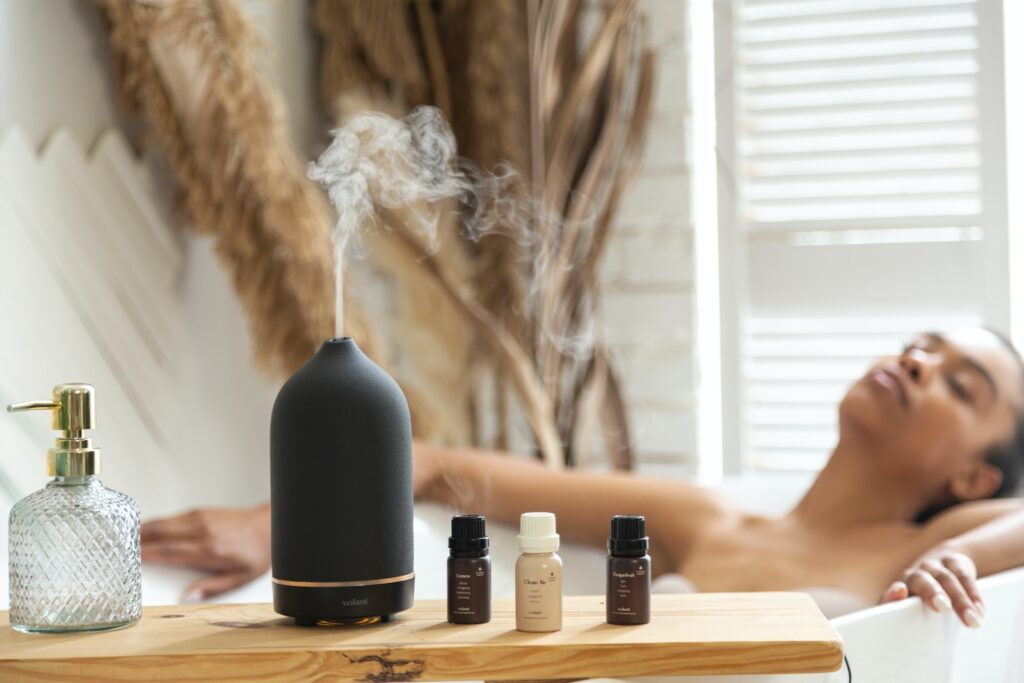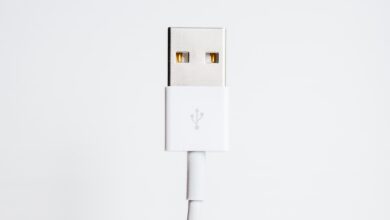
Feeling down during the colder months is completely normal, but for women in the UAE, the impact can be intensified by Seasonal Affective Disorder (SAD). The name may sound daunting, but fret not, because this article is here to help! With friendly tips and advice tailored specifically for women in the UAE, you’ll discover practical strategies to tackle SAD head-on and bring some sunshine back into your life. So, grab a cup of tea, get cozy, and let’s find out how you can beat those winter blues!
Understanding Seasonal Affective Disorder (SAD)
Seasonal Affective Disorder, commonly known as SAD, is a type of depression that occurs at specific times of the year. It typically begins in the late fall or early winter when the days become shorter and sunlight exposure decreases. SAD is believed to be caused by a combination of factors, including changes in the body’s circadian rhythm and a decrease in serotonin levels, which can affect mood and overall well-being.
What is Seasonal Affective Disorder
Seasonal Affective Disorder is a form of depression that follows a seasonal pattern. Although it is most commonly associated with the winter months, it can also occur during the summer season, albeit less frequently. The symptoms of SAD can vary from person to person and may include feelings of sadness, lethargy, irritability, and a loss of interest in activities normally enjoyed.

Prevalence of SAD in the UAE
In the United Arab Emirates (UAE), where the climate is predominantly hot and sunny, SAD may not be as prevalent compared to countries with long, dark winters. However, studies have shown that individuals in the UAE, especially women, may still experience seasonal mood changes. The high prevalence of vitamin D deficiency among the population, along with other risk factors, can contribute to the onset of SAD in the UAE.
Causes of SAD
The exact cause of Seasonal Affective Disorder is not yet fully understood. However, researchers believe that several factors may contribute to its development. One possible cause is the disruption of the body’s internal clock, also known as the circadian rhythm. This disruption can occur due to the decrease in sunlight exposure during the winter months, leading to changes in hormone levels and neurotransmitters in the brain. Additionally, a lack of serotonin, a neurotransmitter that regulates mood, may also play a role in the development of SAD.
Symptoms of SAD
The symptoms of Seasonal Affective Disorder can range from mild to severe and may significantly impact an individual’s daily life. Common symptoms include low mood, feelings of hopelessness or despair, loss of interest in activities, increased appetite (especially for carbohydrates), difficulty concentrating, fatigue or low energy, and changes in sleep patterns. If you are experiencing these symptoms, it is essential to seek professional help.
Identifying Risk Factors
Understanding the risk factors associated with Seasonal Affective Disorder can help individuals identify their susceptibility to this condition. While anyone can develop SAD, certain factors may increase the likelihood of experiencing it.
Climate and Weather Conditions
Living in regions with long, cold winters and limited sunlight can increase the risk of developing SAD. The lack of sunlight affects the body’s production of serotonin and melatonin, which can lead to changes in mood and sleep patterns.
Lack of Sunlight
Exposure to natural sunlight is essential for the production of vitamin D and serotonin, both of which affect mood and overall well-being. Limited sunlight during the winter months can contribute to the development of SAD.
Vitamin D Deficiency
Vitamin D deficiency is prevalent in the UAE due to various factors, such as limited sunlight exposure, cultural practices, and wearing clothing that covers most of the body. Low levels of vitamin D have been linked to an increased risk of depression and may contribute to the onset of SAD.
Hormonal Changes
Fluctuations in hormone levels, such as serotonin and melatonin, can impact mood and energy levels. These hormonal changes during the winter months can contribute to the development of SAD.
Stress and Lifestyle Factors
High levels of stress, unhealthy eating habits, lack of exercise, and poor sleep patterns can all contribute to the development of SAD. Adopting a healthy lifestyle and managing stress can help reduce the risk of experiencing seasonal mood changes.

Creating a Supportive Environment
Creating a supportive environment is crucial for managing Seasonal Affective Disorder. Surrounding yourself with positive people who uplift your mood and provide emotional support can make a significant difference in coping with SAD.
Surrounding Yourself with Positive People
Spending time with family and friends who have a positive influence can help alleviate symptoms of SAD. Engaging in social activities and maintaining strong connections with loved ones can provide emotional support during challenging times.

Seeking Emotional Support
If you are struggling with SAD, seeking emotional support from a therapist or joining a support group can be beneficial. Talking about your feelings and experiences with others who can relate can help reduce feelings of isolation and provide valuable coping strategies.
Establishing a Routine
Establishing a daily routine can help provide structure and stability, which is especially crucial during the winter months. Having a consistent schedule for sleep, meals, exercise, and leisure activities can help regulate your body’s internal clock and minimize symptoms of SAD.
Enhancing Indoor Lighting
Since limited sunlight exposure is a significant factor in the development of SAD, enhancing indoor lighting can help alleviate symptoms. Maximizing natural light by keeping curtains and blinds open during the day, as well as using bright artificial lighting, can improve mood and energy levels.
Taking Care of Physical Health
Maintaining physical health is essential for managing Seasonal Affective Disorder. Adopting healthy habits can positively impact mood and overall well-being.

Eating a Balanced Diet
Consuming a balanced diet rich in fruits, vegetables, whole grains, and lean proteins can provide essential nutrients for brain health and enhanced mood. Avoiding excessive consumption of processed foods and sugars is important, as these can negatively affect energy levels and mood.
Maintaining Regular Exercise
Engaging in regular physical activity, such as walking, swimming, or yoga, can help boost mood by increasing endorphin levels and reducing stress. Aim for at least 30 minutes of moderate exercise most days of the week.
Getting Sufficient Sleep
Adequate sleep is crucial for overall well-being and mood regulation. Establishing a consistent sleep routine, ensuring a comfortable sleep environment, and practicing relaxation techniques can improve sleep quality and minimize symptoms of SAD.
Managing Stress Levels
Stress can exacerbate symptoms of SAD, so it is essential to adopt stress management techniques. Engaging in activities such as meditation, deep breathing exercises, or pursuing enjoyable hobbies can help reduce stress and boost mood.
Supplementing with Vitamin D
Due to the high prevalence of vitamin D deficiency in the UAE, supplementation may be necessary to ensure optimal levels. Consult with a healthcare professional to determine the appropriate dosage of vitamin D supplementation for your specific needs.

Maximizing Exposure to Natural Light
Increasing exposure to natural light is crucial for managing Seasonal Affective Disorder. Making a conscious effort to maximize natural light can have significant positive effects on mood and overall well-being.
Spending Time Outdoors
Whenever possible, try to spend time outdoors during daylight hours. Even on cloudy days, natural light exposure can help regulate circadian rhythms and improve mood. Incorporate activities such as walking, gardening, or sitting on a sunny balcony into your daily routine.
Opening Curtains and Blinds
During the day, ensure that curtains and blinds are open to allow natural light to enter your living space. Maximizing exposure to sunlight indoors, especially in rooms where you spend the most time, can have a positive impact on your mood and energy levels.
Arranging Your Workspace Near Windows
If you work from home or have control over your workspace, consider arranging your desk or workstation near a window. This will provide you with natural light exposure throughout the day, which can help alleviate symptoms of SAD.
Using Light Therapy Devices
Light therapy, also known as phototherapy, can be an effective treatment for Seasonal Affective Disorder. Light therapy devices simulate natural sunlight and can be used in the comfort of your own home. Consult with a healthcare professional to determine the most suitable light therapy device for your needs.
Engaging in Mood-Boosting Activities
Engaging in activities that boost mood and promote emotional well-being is essential when managing Seasonal Affective Disorder. Incorporating the following activities into your routine can provide a much-needed uplift.
Practicing Mindfulness and Meditation
Mindfulness and meditation techniques can help reduce stress, improve focus, and promote a more positive mindset. Dedicate a few minutes each day to engage in mindfulness activities or guided meditation to help alleviate symptoms of SAD.

Engaging in Creative Outlets
Exploring creative outlets, such as painting, writing, or playing a musical instrument, can provide a sense of accomplishment and fulfillment. Engaging in activities that allow for self-expression can help improve mood and overall well-being.
Joining Support Groups
Joining a support group specifically catered to individuals experiencing Seasonal Affective Disorder can provide a sense of belonging, understanding, and valuable insights into managing the condition. Sharing experiences and coping strategies with others can be highly beneficial.
Developing a Hobby
Pursuing a hobby that brings joy and fulfillment can be an effective way to combat symptoms of SAD. Whether it’s gardening, cooking, photography, or any other activity, immersing yourself in something you love can provide a welcome distraction and boost overall mood.
Exploring Alternative Therapies
In addition to traditional treatment approaches, some individuals find alternative therapies to be helpful in managing Seasonal Affective Disorder. While these methods may not work for everyone, exploring alternative therapies can provide additional support.
Acupuncture
Acupuncture is an ancient Chinese practice that involves the insertion of thin needles into specific points on the body. Some individuals find acupuncture to be effective in alleviating symptoms of depression and improving overall mood.
Herbal Supplements
Certain herbal supplements, such as St. John’s Wort or saffron, have been studied for their potential mood-enhancing effects. However, it is important to consult with a healthcare professional before starting any herbal supplements, as they may interact with other medications or have side effects.
Aromatherapy
Aromatherapy involves the use of essential oils to promote physical and psychological well-being. Some essential oils, such as lavender or citrus oils, are known for their uplifting properties and may help improve mood when used in aromatherapy practices.

Massage Therapy
Massage therapy can help reduce stress, promote relaxation, and improve overall well-being. Regular massages, especially those that incorporate aromatherapy or essential oils, may help alleviate symptoms of SAD and enhance mood.
Seeking Professional Help
If you are struggling with Seasonal Affective Disorder, seeking professional help is essential. Mental health professionals can provide guidance, support, and evidence-based treatments to help manage and overcome SAD.
Consulting with a Mental Health Professional
A mental health professional, such as a psychiatrist or psychologist, can assess and diagnose Seasonal Affective Disorder. They can work with you to develop an individualized treatment plan, which may include talk therapy, counseling, and other therapeutic interventions.
Exploring Cognitive Behavioral Therapy
Cognitive Behavioral Therapy (CBT) is a type of talk therapy that focuses on changing negative thought patterns and behaviors. CBT has been shown to be effective in treating SAD and can equip individuals with coping skills and strategies to manage symptoms effectively.
Considering Antidepressant Medications
In some cases, healthcare professionals may recommend antidepressant medications to manage symptoms of Seasonal Affective Disorder. These medications can help balance neurotransmitter levels in the brain and alleviate depressive symptoms. It is important to consult with a healthcare professional to determine the most appropriate medication and dosage for your needs.

Understanding the Role of Hormones
Hormones play a vital role in mood regulation, and fluctuations in hormone levels can influence the onset and severity of Seasonal Affective Disorder.
Effects of Hormonal Changes on Mood
Changes in hormone levels, such as serotonin and melatonin, can impact mood and energy levels. During the winter months, when sunlight exposure is limited, the body’s production of these hormones may be disrupted, leading to symptoms of SAD.
Balancing Hormones Naturally
Adopting a healthy lifestyle, including regular exercise, proper nutrition, and stress management, can help balance hormone levels naturally. Prioritizing self-care and engaging in activities that promote hormone balance can contribute to managing symptoms of SAD.
Hormone Replacement Therapy (HRT)
In some cases, hormone replacement therapy (HRT) may be recommended to manage hormonal imbalances associated with Seasonal Affective Disorder. This treatment approach involves supplementing hormone levels to alleviate symptoms. It is crucial to consult with a healthcare professional to determine if HRT is a suitable option for you.
Creating a Self-Care Routine
Prioritizing self-care is essential for managing Seasonal Affective Disorder and maintaining overall well-being. By incorporating self-care activities into your routine, you can enhance your mood, reduce stress levels, and improve your quality of life.
Prioritizing Self-Care
Make self-care a non-negotiable part of your daily routine. Engage in activities that bring you joy, relaxation, and fulfillment. This can include anything from taking a warm bath, practicing yoga, reading a book, or simply enjoying a cup of tea.

Finding Joy in Small Things
Take time to appreciate and find joy in the small things in life. This can be as simple as watching a beautiful sunset, listening to uplifting music, or spending quality time with loved ones. Cultivating a sense of gratitude can help shift your focus to positive experiences and improve your overall mood.
Practicing Relaxation Techniques
Incorporate relaxation techniques, such as deep breathing exercises, progressive muscle relaxation, or guided imagery, into your daily routine. These techniques can help reduce stress, promote relaxation, and improve overall well-being.
Setting Realistic Goals
Setting realistic goals and breaking them down into achievable steps can boost your sense of accomplishment and motivation. Focus on small victories and celebrate your progress. By setting attainable goals, you can improve self-esteem and mental well-being.
In conclusion, Seasonal Affective Disorder is a real and impactful condition that affects individuals worldwide, including those in the UAE. Understanding the causes, symptoms, and risk factors associated with SAD is essential for effectively managing the condition. By creating a supportive environment, taking care of physical and mental health, maximizing exposure to natural light, engaging in mood-boosting activities, exploring alternative therapies, seeking professional help when needed, and prioritizing self-care, individuals can find ways to alleviate SAD symptoms and improve their overall well-being. Remember, you are not alone, and there are numerous resources and support available to help you navigate this challenging journey.




